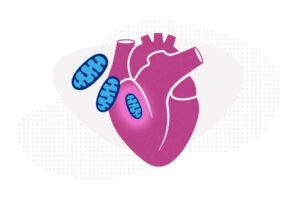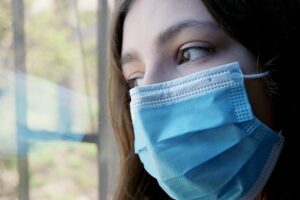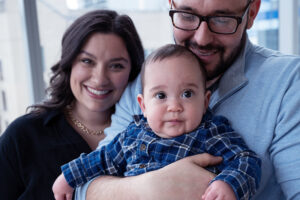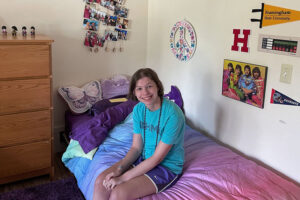Can we prevent seizures in Sturge-Weber syndrome?
Port wine stains — capillary malformations on the skin — are the most visible manifestation of Sturge-Weber syndrome. However, up to 60 percent of babies with birthmarks in high-risk locations (forehead and upper eyelid) also have capillary malformations in their brain. Of these, 75 to 90 percent will experience a seizure before the age of 2, ... Read More about Can we prevent seizures in Sturge-Weber syndrome?
Helping Jasmine manage Sturge-Weber syndrome before symptoms start
Sturge-Weber syndrome is a rare neurovascular disorder that increases the risk of seizures in infants due to abnormal blood vessel development in the brain. Almost 90 percent of children with Sturge-Weber experience their first seizure before age 2, which makes proactive, seizure-preventive care important in minimizing the risk of long-term brain injury. Finding such care, ... Read More about Helping Jasmine manage Sturge-Weber syndrome before symptoms start
Reversing the trend: Easing the mental health boarding crisis in emergency rooms
Anxiety, depression, and suicide attempts have been rising over the past decade, especially among teens, often landing them in emergency departments (EDs). Due to a nationwide shortage of beds in psychiatric treatment programs, virtually all pediatric hospitals are having to keep patients in the ED and on inpatient medical and surgical floors — sometimes for ... Read More about Reversing the trend: Easing the mental health boarding crisis in emergency rooms
Mitochondrial transfer restores heart muscle — but how?
Transferring mitochondria from a patient’s healthy skeletal muscle to damaged, ischemic heart tissue has been shown to restore heart muscle, increase energy production, and improve ventricular function. After pioneering preclinical work by James McCully, PhD, at Boston Children’s Hospital about a decade ago, cardiac surgeons led by Sitaram Emani, MD, have been testing it as ... Read More about Mitochondrial transfer restores heart muscle — but how?
Study suggests hypoxia overexpression causes pericytes to contribute to pulmonary hypertension
Pericytes, the multifunctional cells that work within the walls of capillaries, have been a subject of focus in the study of vascular development, cerebral blood flow, cancer, and neurodevelopment diseases. But pericytes hadn’t been truly studied for their potential role in pulmonary arterial hypertension (PAH) until they landed under the microscopes of Boston Children’s researchers. They recently ... Read More about Study suggests hypoxia overexpression causes pericytes to contribute to pulmonary hypertension
Brain wiring predicted adolescents’ emotional health during COVID
The COVID-19 pandemic was emotionally devastating for many adolescents, disrupting their schooling and social/emotional development. Drawing on national data, a large study finds that how adolescents’ brains were wired — before COVID-19 — predicted their stress, negative emotions, and overall mental health during the height of the pandemic, making them more vulnerable or more resilient. ... Read More about Brain wiring predicted adolescents’ emotional health during COVID
Constant improvements make the Ross procedure a safe aortic valve replacement option
Cardiac surgeons understand that innovation isn’t always about invention. Improving something can be just as transformative. So it shouldn’t come as a surprise that Boston Children’s cardiac surgery team is seeing lasting positive outcomes in patients after making adjustments over the years to the Ross procedure, a last-option treatment for aortic valve disease that hasn’t always been accepted by ... Read More about Constant improvements make the Ross procedure a safe aortic valve replacement option
A partner through amniotic band syndrome: Jace’s story
Jace is a happy, energetic 9-month-old whose big brown eyes light up a room. He’s adored by his parents, Kait and Evan, who not only delight in being first-time parents but are also incredibly appreciative of the care that helped save their son. It was care that took a village, Kait and Evan say — ... Read More about A partner through amniotic band syndrome: Jace’s story
Whether she’s embracing school, sports, or music, Lindsey shows how Williams syndrome can be managed
One of the first things Lindsey Franco will tell you is, “I like being me. I like being happy.” The 19-year-old has a lot to be happy about. She attends a post-high school transition program that helps young adults expand their social and life skills. There, she does all the things she enjoys, including playing ... Read More about Whether she’s embracing school, sports, or music, Lindsey shows how Williams syndrome can be managed
Nurse-led innovations: A virtual-nursing pilot helps nurses thrive
It was night shift on the 9E Inpatient Medical Unit and Marisol Hernandez, BSN, RN, CPN, was helping another nurse review her patient assignments. With about 85 percent of their patients admitted from the emergency department (ED), nurses on the unit at Boston Children’s Hospital often don’t know how many patients will be admitted during ... Read More about Nurse-led innovations: A virtual-nursing pilot helps nurses thrive











